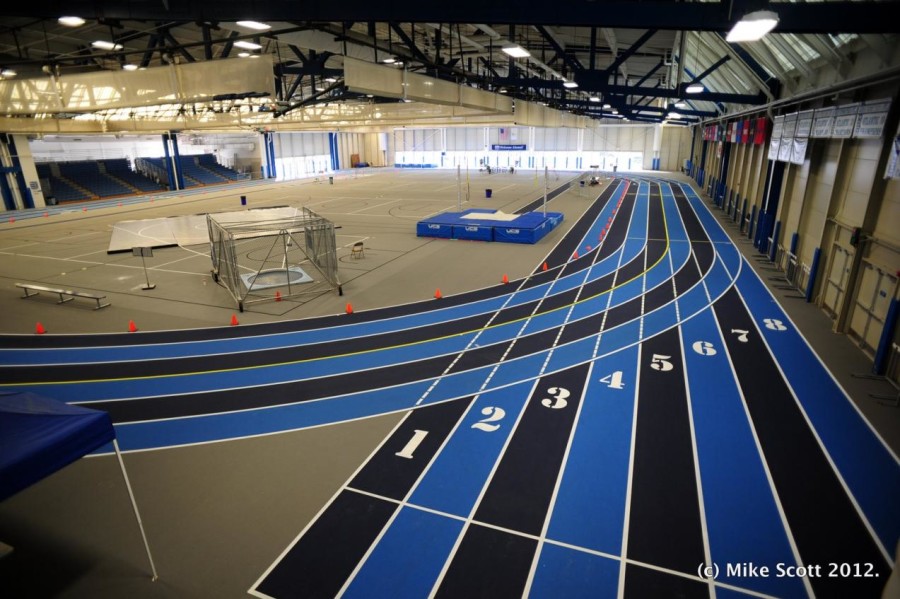When the weather outside gets frightful, training indoors can be delightful
When winter is at its worst, opting to stay indoors and using an indoor track or treadmill may be the safest and most effective way to get a run in.


If it hasn’t already arrived, winter is definitely on its way and it will only be a matter of time before snow, slush, ice, cold temps and colder winds await you out your front door.
RELATED: Nine shoes that will help you outrun winter
Those among us who are truly hardcore will lace up and run in even the most inhospitable conditions. But many more of us (the sane and sensible types) are not as willing to embrace discomfort or risk injury and so will instead opt to train indoors.
For some, running on an indoor track–often 200m but in some case closer to the typical 400m–may be an available option. The much-hated treadmill is another such option for those who prefer the warm comforts of home or a nearby gym. Both provide a safe escape from the elements and are also an effective means of running and training through the worst parts of winter.
RELATED: Learning to stop hating on the treadmill
RELATED: This man trained for a sub 3:00 marathon in the most unconventional way
The most obvious advantage of training indoors include sure footing and a much softer surface to run on. Mild to moderate temperatures are also a nice bonus and in the case of the treadmill, you also get complete and consistent control over your speed and elevation. Combined, this allows for you to complete not only typical runs but also attempt your hardest and longest workouts without having to worry about external factors and conditions.

If you’re new to running on a track, note that there are a few (unofficial) rules to abide by. Generally, traffic goes in a counter-clockwise direction and the fastest runners get the right-of-way, usually on the inside lanes. If you hear someone yell “track,” that means a faster runner is about to pass you and you should immediately move to the outermost (or in some cases the innermost) lanes to let them by. If you choose to listen to music while you run, keep the volume on low so you can still hear what’s happening around you. If in a group, stick to running mostly single file or two abreast as not to take up the entire track. Note that GPS usually doesn’t work indoors so you’ll have to use a footpod or a watch with an accelerometer if you want to accurately track your pace and distance (or else you can remember how many laps you’ve run and do the calculations).
Treadmills are more straightforward to use but there are a few things to consider. Many machines have limits to how long they can be used (and most stop automatically at one hour) so plan your run and workouts with that in mind so you don’t get cut off mid-run. A lot of machines are also programmed only in imperial units (miles) so you may have to do some math before you arrive so you know how far or how fast you plan to go. Keep your music on low as not to disturb those around you and in all cases, be respectful of others. Be sure to wipe down the machine after you use it.


